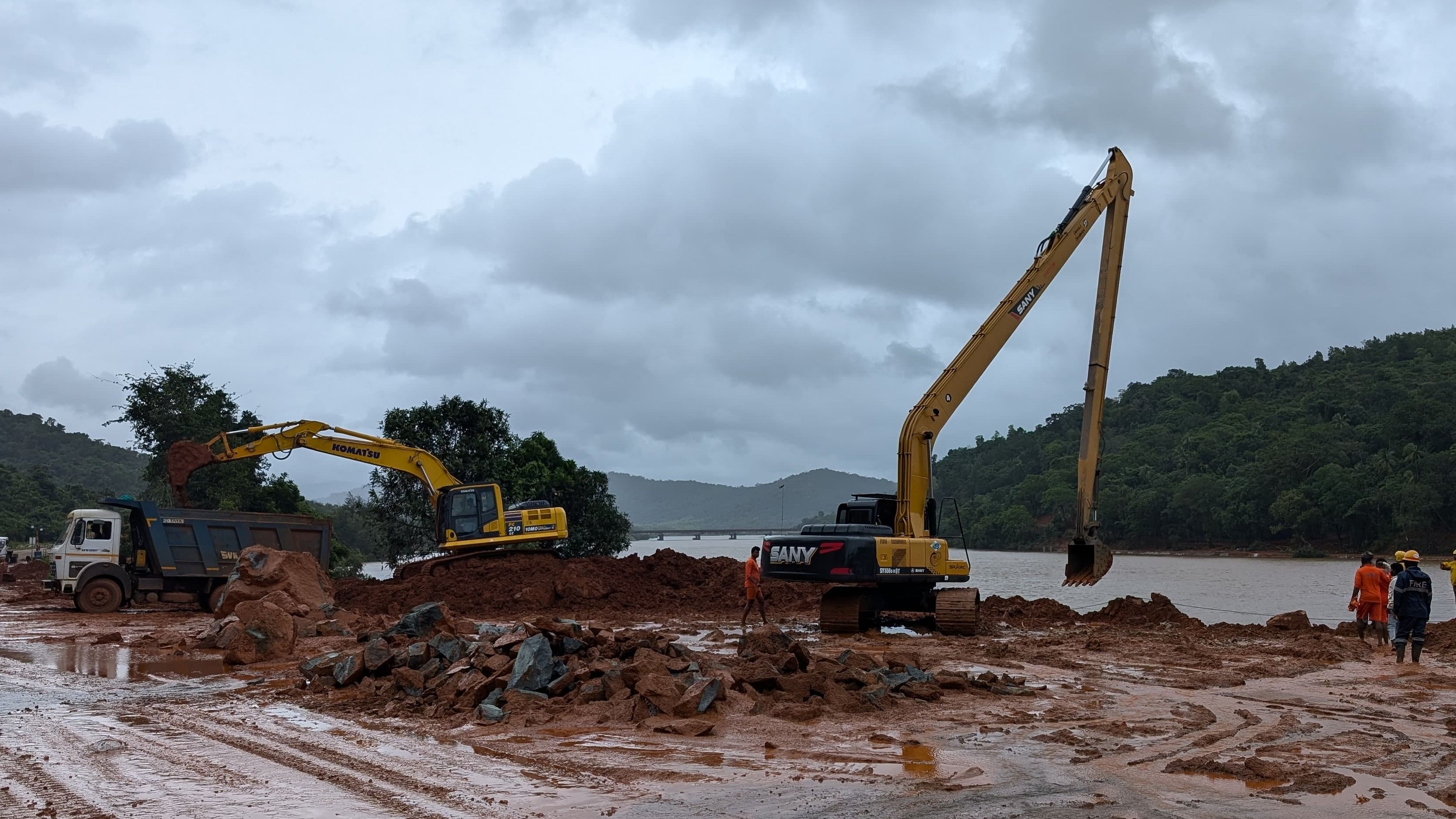
Credit: DH Photo
Bengaluru: A technical study of the landslide in Shirur has blamed unscientific works on NH-66, a road widened by the National Highway Authority of India (NHAI), as the reason for the disaster that claimed eight lives even as the NHAI insisted it was an unavoidable natural calamity.
The Geological Survey of India (GSI), which assessed the landslide, has submitted a preliminary report to the government that raises several questions over the works and suggests immediate and long-term measures to prevent further damage.
"The natural drainage flows have been disturbed, the slide area and the left flank are structurally deformed, presenting gouge-like material, multi-temporal satellite imagery indicates anthropogenic interference on the slopes," are among the observations made by the GSI report that has been accessed by DH.
The report did acknowledge the 503 mm rain in a short span as a major trigger, causing saturation of the thick debris, but said the steep gradient of the cut slope, presence of highly weathered rock, thick debris and lack of toe support were the primary causative factors of the debris flow.
"The landslide landslide movement was extremely rapid and currently active with potential for enlargement," it said.
Revenue Minister Krishna Byre Gowda said the government has flagged the issue with the NHAI.
"We have taken the issue very seriously," said Byre Gowda. "There needs to be some accountability. Lives have been lost but the matter is being unnecessarily politicised. Since it is a national highway that comes under the jurisdiction of NHAI, we have raised the issue with the regional authority who was present during the meeting called by the Chief Minister. We will continue to pursue this matter till we fix accountability."
The natural drainage flows have been disturbed the slide area and the left flank are structurally deformed presenting gouge-like material multi-temporal satellite imagery indicates anthropogenic interference on the slopes - Geological Survey of India report
NHAI Regional Officer V P Brahmankar pointed to an alternative report by an IIT-Bombay professor that blamed heavy rain for the disaster. "More than 500 mm rain in the short duration of three days has led to the accident," he said.
"The report does point to some issues with regard to the road. However, the disaster itself was unavoidable. We have set up a four-member team to study the Shirur stretch as well as two others in Hassan-Maranahalli and Addahole-Bantwal to assess vulnerability and fix any problems."
Meanwhile, sources in the government said that the Deputy Commissioners of Uttara Kannada, Udupi and Dakshina Kannada have written to the government, flagging several issues with NH-66.
"The Uttara Kannada DC has raised the issue of lack of slope stabilisation while the Udupi DC pointed to water-logging, poor drainage system and non-functioning of street lights; the Dakshina Kannada DC has sought a retention wall as a preventive measure to avert landslide disasters," the source said.